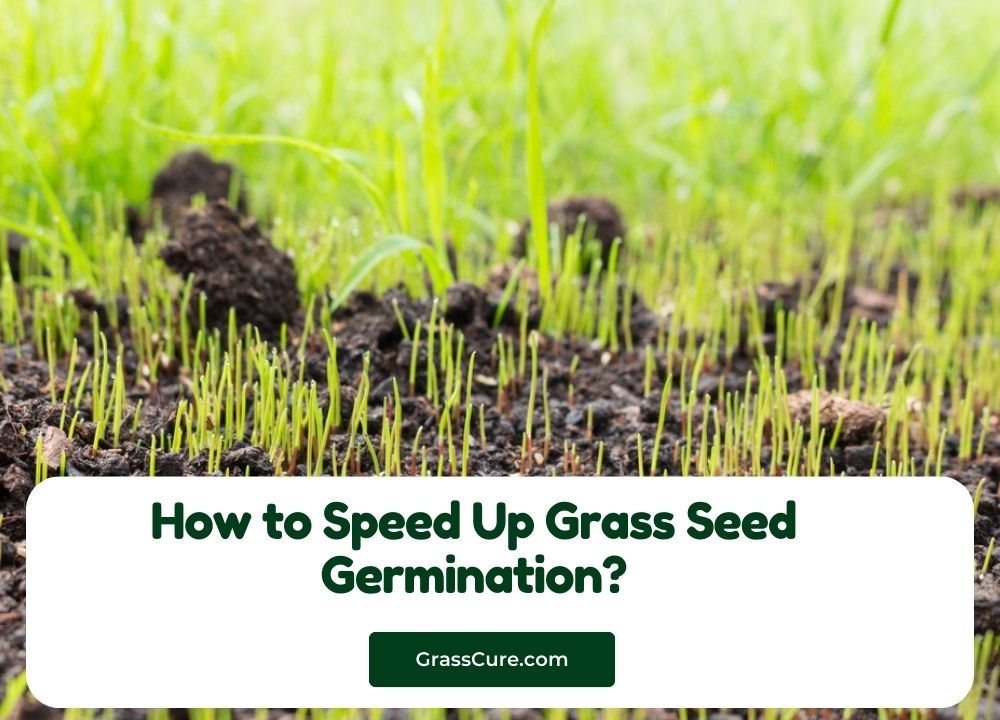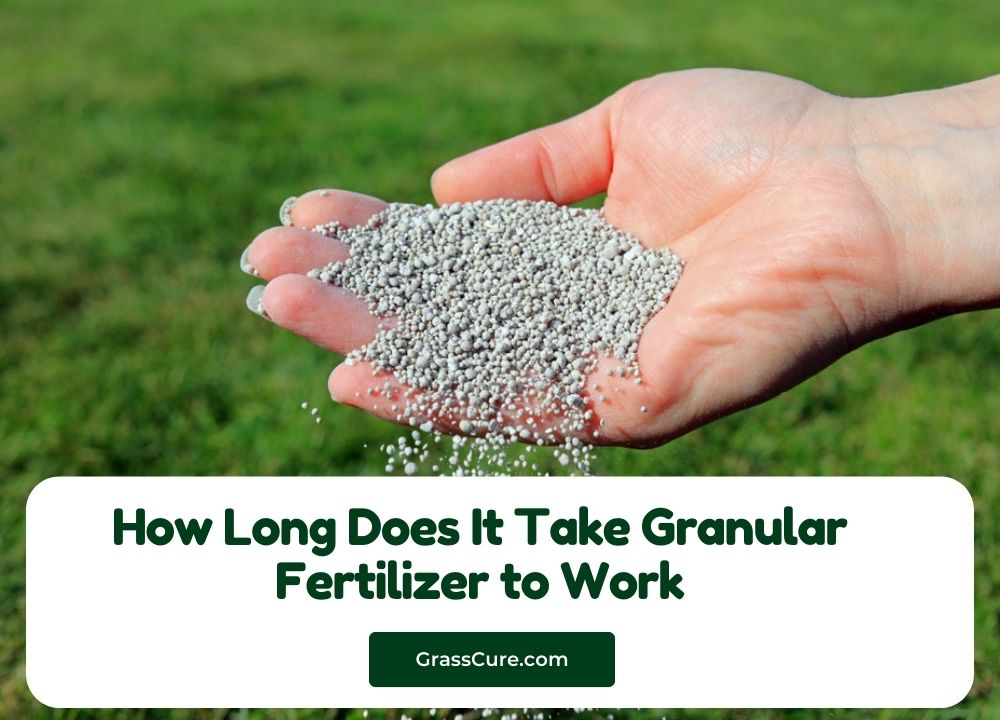Grass seed germination is a crucial step in establishing a lush and healthy lawn. Understanding how to expedite this process can lead to quicker results, giving you a vibrant green space in no time. Various factors, including temperature, moisture, and soil quality, play significant roles in determining how fast grass seeds sprout. In this post, we’ll explore effective tips and techniques to speed up grass seed germination, helping you achieve the beautiful lawn you desire more efficiently. Whether you’re a seasoned gardener or a novice, these insights will empower you to create a thriving grassy oasis.
How to Speed Up Grass Seed Germination Details Guide
Understanding Grass Seed Germination
Grass seed germination is the process through which dormant seeds awaken and begin to grow, ultimately establishing new grass. This process involves several key stages:
- Imbibition: The first stage occurs when seeds absorb water, causing them to swell. This hydration activates enzymes that kickstart metabolic processes necessary for growth.
- Activation: Once adequately hydrated, seeds enter a phase of metabolic activity. Stored nutrients are mobilized to fuel the growth of the embryonic plant, leading to the development of the root and shoot.
- Emergence: The seed coat eventually splits, and the radicle (the embryonic root) emerges first, anchoring the plant in the soil. Following this, the shoot grows upwards, pushing through the soil to reach the surface.
Several factors influence the speed and success of grass seed germination:
- Moisture: Consistent moisture is essential for germination. Seeds need a well-drained but moist environment to facilitate water absorption and metabolic processes.
- Temperature: Different grass varieties have specific temperature ranges that optimize germination. Generally, warm-season grasses prefer temperatures between 70°F and 95°F, while cool-season grasses thrive in temperatures ranging from 50°F to 65°F.
- Light: Some grass seeds require light to germinate, while others do not. Understanding the light requirements of your chosen grass variety can help ensure successful sprouting.
- Soil Quality: Healthy, nutrient-rich soil promotes faster germination. Factors like soil pH, compaction, and the presence of organic matter play critical roles in creating an ideal growing environment.
Choosing the Right Grass Seed
Selecting the appropriate grass seed is crucial for successful germination and the long-term health of your lawn. Here are key considerations to keep in mind when choosing grass seed:
- Climate Compatibility:
- Cool-Season Grasses: Best suited for northern regions with cold winters and moderate summers. Examples include Kentucky bluegrass, tall fescue, and perennial ryegrass. These grasses thrive in temperatures between 60°F and 75°F.
- Warm-Season Grasses: Ideal for southern regions with hot summers and mild winters. Varieties like Bermuda grass, zoysia grass, and buffalo grass prefer temperatures ranging from 80°F to 95°F for optimal growth.
- Sunlight Requirements:
- Consider the amount of sunlight your lawn receives. Some grasses, like Bermuda and zoysia, require full sun, while others, like fine fescue, can tolerate shade. Understanding the light conditions of your lawn will help you choose a grass variety that will thrive.
- Soil Type:
- Different grass varieties perform better in specific soil types. For example, tall fescue is more tolerant of clay soils, while Kentucky bluegrass prefers well-draining loamy soils. Conducting a soil test can provide valuable information to guide your selection.
- Use and Maintenance:
- Consider how you plan to use your lawn. If it’s for heavy foot traffic, choose durable options like perennial ryegrass or Bermuda grass. For low-maintenance lawns, fescue blends are a good choice. Additionally, think about maintenance requirements, such as mowing frequency, watering needs, and disease resistance.
- Seed Quality:
- Look for high-quality seeds that have a good germination rate and are free from weed seeds. Check the label for information on the seed blend, purity, and germination percentage. Certified seed options are generally more reliable.
- Local Recommendations:
- Consult with local garden centers or agricultural extension services for recommendations tailored to your specific region and conditions. They can provide insights into what grasses perform best in your area.
Preparing the Soil
Proper soil preparation is essential for successful grass seed germination and the long-term health of your lawn. Here are the key steps to prepare your soil effectively:
- Soil Testing:
- Begin by testing your soil to assess its pH, nutrient levels, and overall health. Soil testing kits are widely available at garden centers or through local extension services. The ideal pH for most grass types ranges from 6.0 to 7.0. If your soil is too acidic or alkaline, you may need to amend it accordingly.
- Clearing Debris:
- Remove any rocks, sticks, old grass, and weeds from the area where you plan to plant. Clearing debris ensures that grass seeds can make good contact with the soil, enhancing germination.
- Tilling the Soil:
- Use a shovel, hoe, or rototiller to loosen the top 2 to 4 inches of soil. Tilling aerates the soil, breaks up compaction, and helps improve drainage. This process also mixes in organic matter, which can enhance soil structure and fertility.
- Amending the Soil:
- Based on the results of your soil test, you may need to amend the soil to improve its quality. Common amendments include:
- Compost: Adding organic matter improves soil structure, moisture retention, and nutrient content.
- Lime: Raises soil pH if it’s too acidic.
- Sulfur: Lowers soil pH if it’s too alkaline.
- Fertilizers: Incorporating a balanced fertilizer can provide essential nutrients to support seedling growth.
- Based on the results of your soil test, you may need to amend the soil to improve its quality. Common amendments include:
- Leveling the Soil:
- After tilling and amending, use a rake to level the soil surface, filling in any low spots. A smooth, even surface helps ensure even seed distribution and germination.
- Moistening the Soil:
- Before sowing the seeds, lightly water the prepared soil to ensure it is moist but not saturated. This creates a conducive environment for seed germination and helps prevent the soil from crusting over.
- Testing Drainage:
- Check the drainage of your prepared soil by digging a small hole and filling it with water. If the water drains away quickly, the soil has good drainage. If it remains pooled for an extended period, you may need to consider further amendments to improve drainage.
Proper Seeding Techniques
Using the right seeding techniques is essential for ensuring that grass seeds germinate successfully and establish a healthy lawn. Here are the key steps to follow for optimal seeding:
- Choose the Right Time:
- Timing your seeding is crucial. For cool-season grasses, the best time to sow seeds is in early spring or early fall when temperatures are mild. For warm-season grasses, aim for late spring to early summer when the soil is warm.
- Determine Seed Depth:
- Grass seeds should generally be sown at a depth of 1/8 to 1/4 inch, depending on the variety. Smaller seeds typically require shallower planting. Planting too deep can prevent seeds from reaching the surface, while planting too shallow may expose them to drying out or being washed away.
- Seed Spacing:
- Follow the recommended seeding rate on the seed package for the specific grass variety. Proper spacing helps ensure that grass plants have enough room to grow and reduces competition for nutrients and water. Over-seeding can lead to overcrowded growth and increased disease risk.
- Seeding Methods:
- Broadcasting: This method involves spreading seeds evenly across the soil surface using a hand-held or walk-behind spreader. It’s effective for larger areas but may require additional raking to ensure seed-to-soil contact.
- Drilling: Using a seed drill to plant seeds at the correct depth and spacing is one of the most efficient methods. Drilling ensures better seed-to-soil contact and can lead to more uniform germination.
- Hydroseeding: This method involves mixing seeds with water, fertilizer, and mulch, then spraying the mixture onto the soil. Hydroseeding is particularly effective for large areas and steep slopes.
- Covering the Seeds:
- After seeding, lightly rake the soil to cover the seeds with a thin layer of soil, which helps protect them from birds and other pests. This also ensures good seed-to-soil contact, essential for germination.
- Rolling the Soil:
- If possible, use a roller to compact the soil lightly after seeding. This helps press the seeds into the soil, improving contact and moisture retention.
- Watering After Seeding:
- After planting, water the area gently but thoroughly to moisten the soil without washing away the seeds. Maintain consistent moisture in the top inch of soil during the germination period, typically 1 to 3 weeks, depending on the grass type and environmental conditions.
- Monitoring and Adjusting:
- Keep an eye on the area for any signs of uneven germination or erosion. If areas appear too dry or washed out, you may need to reseed or adjust your watering strategy.
Watering for Germination
Watering is a critical factor in the grass seed germination process. Proper moisture levels promote quick and healthy sprouting. Here are essential tips for watering effectively during this crucial stage:
- Initial Watering:
- After sowing the seeds, water the area gently but thoroughly to moisten the top inch of soil. This initial watering helps settle the soil and ensures that seeds are in contact with moisture, which is vital for germination.
- Consistency is Key:
- For the first few weeks after seeding, it’s important to keep the soil consistently moist, but not saturated. Watering should be frequent enough to prevent the soil from drying out. Aim for light, frequent watering rather than heavy, infrequent watering.
- Watering Schedule:
- Watering once or twice a day may be necessary, especially in warmer weather or dry conditions. In cooler, more humid conditions, you may only need to water every few days. Monitor the soil moisture regularly to determine the right frequency for your specific environment.
- Depth of Watering:
- Ensure that your watering penetrates deep enough to reach the seeds, ideally about 1 inch of moisture per week. You can check soil moisture by inserting a finger into the soil; if it feels dry to the touch, it’s time to water.
- Avoid Overwatering:
- While moisture is essential, overwatering can be detrimental. Excess water can lead to soil compaction, seed rot, and fungal diseases. If you notice pooling water or overly soggy soil, reduce the frequency or duration of your watering sessions.
- Watering Technique:
- Use a fine spray nozzle or a gentle watering can to avoid displacing seeds. A soaker hose can also be effective for evenly distributing moisture without disturbing the soil surface.
- Watch for Signs of Germination:
- As grass seeds begin to germinate, continue to water consistently but gradually reduce frequency as seedlings establish roots. Once grass blades reach about 2 to 3 inches in height, you can transition to a standard watering schedule for established lawns.
- Adjusting for Weather Conditions:
- Be mindful of rainfall and adjust your watering schedule accordingly. During rainy periods, you may need to reduce or eliminate watering, while dry spells may require more frequent watering.
Ideal Temperature and Light Conditions
Creating the right temperature and light conditions is essential for promoting quick and successful grass seed germination. Here’s what you need to know:
- Temperature Requirements:
- Cool-Season Grasses: These grasses thrive in cooler temperatures, generally between 50°F and 65°F (10°C to 18°C). Ideal planting times are early spring and early fall when soil temperatures are within this range.
- Warm-Season Grasses: These grasses prefer warmer temperatures, typically ranging from 70°F to 95°F (21°C to 35°C). Late spring and early summer are the best times to sow these seeds when the soil is adequately warmed.
- Monitoring Soil Temperature:
- Soil temperature is critical for germination. Use a soil thermometer to check the temperature at the seed depth. Seeds need warmth to trigger the metabolic processes necessary for germination. Ideally, the soil should be at least 55°F (13°C) for cool-season grasses and 65°F (18°C) for warm-season grasses.
- Light Requirements:
- Some grass seeds require light for germination, while others do not. Understanding the light needs of your chosen grass type can help ensure successful sprouting:
- Light-Requiring Seeds: Varieties like fine fescue benefit from light exposure. These seeds should be sown on the soil surface without covering or with a very light layer of soil.
- Dark-Seeking Seeds: Grasses such as Kentucky bluegrass and perennial ryegrass can germinate in darkness, so they can be covered with soil after planting.
- Some grass seeds require light for germination, while others do not. Understanding the light needs of your chosen grass type can help ensure successful sprouting:
- Sunlight Exposure:
- Ensure that your lawn area receives adequate sunlight. Most grass types need at least 4 to 6 hours of direct sunlight daily to thrive. If your lawn is shaded by trees or buildings, consider selecting shade-tolerant grass varieties, such as creeping fescue or shade-tolerant bluegrass.
- Managing Shade:
- If your lawn experiences significant shade, consider thinning nearby trees or shrubs to allow more light to reach the grass. Alternatively, you can use reflective surfaces, such as light-colored mulch, to bounce additional sunlight onto shaded areas.
- Adjusting for Temperature Extremes:
- During hot or dry spells, consider using shade cloth to protect newly germinated seeds from excessive heat. Conversely, in cooler regions, covering seeded areas with a light mulch can help retain soil warmth and moisture.
Using Germination Aids
Germination aids can enhance the speed and success of grass seed germination by providing the optimal conditions necessary for sprouting. Here are several effective aids and techniques you can utilize:
- Seed Starters:
- Pre-Germinated Seeds: Some garden centers offer pre-germinated seeds that have already begun the germination process. These seeds can establish more quickly in your lawn, reducing the time it takes for your grass to grow.
- Seed Coatings: Look for seeds coated with a germination aid, such as fertilizer or a moisture-retaining polymer. These coatings can provide nutrients and help keep seeds hydrated during the germination phase.
- Hydrogel or Water-Soluble Polymers:
- Hydrogel products absorb and retain moisture, releasing it gradually to the seeds as needed. Incorporating these into the soil before sowing can help maintain consistent moisture levels, especially in hot or dry conditions.
- Mulch:
- Applying a thin layer of mulch (e.g., straw, grass clippings, or coconut coir) over newly sown seeds helps retain moisture, regulates soil temperature, and protects seeds from birds and other pests. Make sure the mulch layer is light enough to allow sunlight to reach the seeds.
- Fertilizers:
- Using a starter fertilizer can provide essential nutrients to young grass seedlings, promoting faster growth. Look for a fertilizer with a balanced N-P-K (nitrogen-phosphorus-potassium) ratio specifically designed for new lawns. Be cautious not to over-fertilize, as this can harm seedlings.
- Biostimulants:
- These products, which include natural extracts and beneficial microorganisms, can improve seedling vigor and enhance root development. Look for biostimulants that contain seaweed extracts, humic acids, or mycorrhizal fungi, which can help strengthen seedlings during early growth.
- Soaking Seeds:
- Before planting, soak seeds in water for a few hours (not exceeding 24 hours) to kickstart the germination process. This pre-soaking can help soften the seed coat, allowing for quicker moisture absorption and faster sprouting.
- Using a Germination Mat:
- Germination mats are designed to provide consistent moisture and warmth for seeds. These mats can be particularly beneficial in cooler climates or during early spring when temperatures may fluctuate. Follow the manufacturer’s instructions for optimal use.
- Moisture Retaining Granules:
- Incorporating moisture-retaining granules into the soil can help keep it hydrated during the germination period. These granules can absorb excess moisture and release it gradually, ensuring a steady supply of water to the seeds.
Maintaining a Healthy Environment
Creating and maintaining a healthy environment for your newly seeded grass is crucial for successful germination and establishment. Here are key practices to ensure your lawn thrives:
- Weed Control:
- Weeds compete with grass for nutrients, water, and light. To minimize weed competition:
- Pre-Emergent Herbicides: Apply pre-emergent herbicides before seeding to prevent weed seeds from germinating. Be sure to choose products that are safe for use with new grass.
- Hand Weeding: Monitor the area regularly and remove any weeds by hand. This is especially important in the early stages when grass seedlings are still establishing.
- Weeds compete with grass for nutrients, water, and light. To minimize weed competition:
- Pest Management:
- Protect your seeds and seedlings from pests like birds, insects, and rodents that may be attracted to your newly sown grass.
- Netting or Fencing: Use bird netting or lightweight mesh to cover the seeded area, deterring birds and other pests from accessing the seeds.
- Natural Repellents: Consider using natural pest repellents or beneficial insects (like ladybugs) to control harmful pests without harming your grass.
- Protect your seeds and seedlings from pests like birds, insects, and rodents that may be attracted to your newly sown grass.
- Monitoring Moisture Levels:
- Maintain consistent moisture in the soil without overwatering. Regularly check the soil moisture, especially during dry spells.
- Use mulch or soil moisture sensors to help regulate and maintain adequate moisture levels.
- Soil Aeration:
- Aerating the soil can improve air circulation, enhance root development, and promote healthy grass growth. Consider aerating the lawn annually, especially if the soil becomes compacted.
- Avoiding Foot Traffic:
- Limit foot traffic on the newly seeded areas until the grass is well-established. This reduces soil compaction and allows the seedlings to grow without disturbance.
- Fertilization:
- Once the grass seedlings are a few inches tall and have established roots, consider applying a balanced fertilizer to provide essential nutrients. Follow the recommended application rates and timing based on the type of grass and soil conditions.
- Proper Mowing:
- Once your grass reaches a height of about 3 inches, mow it to encourage lateral growth and thickening. Avoid cutting more than one-third of the grass height at a time to prevent stress on the plants.
- Observation and Adjustment:
- Regularly observe your lawn for signs of stress, disease, or nutrient deficiencies. Early detection allows for prompt action to rectify any issues, ensuring your grass remains healthy and robust.
- Adapting to Environmental Changes:
- Be prepared to adjust your care routine based on weather changes, such as increased heat or rainfall. Adapt watering schedules and maintenance practices accordingly to support the grass’s needs.
Conclusion
Speeding up grass seed germination requires a combination of careful planning, proper techniques, and ongoing maintenance. By understanding the key factors that influence germination—such as soil preparation, temperature, light conditions, and watering—you can create an optimal environment for your grass seeds to thrive. Choosing the right grass variety for your climate and conditions is equally important, ensuring that your lawn is well-suited for its environment.
Incorporating germination aids, controlling weeds and pests, and providing consistent moisture are vital steps in supporting your seeds during the germination process. As your grass establishes itself, maintaining a healthy environment through proper mowing, fertilization, and monitoring will promote robust growth and resilience.
With these strategies in place, you’ll be well on your way to achieving a lush, vibrant lawn in no time. Whether you’re starting a new lawn or overseeding an existing one, these best practices will help you cultivate a beautiful green space that enhances your outdoor experience for years to come.
Additional Resources
To further enhance your knowledge and success in grass seed germination and lawn care, consider exploring the following resources:
- Books:
- “The Lawn Bible: How to Keep It Green, Groomed, and Growing Every Season of the Year” by Wallace H. Carleton: This comprehensive guide covers everything from soil preparation to selecting the right grass types and maintaining a healthy lawn.
- “Turfgrass Management” by A.J. Turgeon: This textbook provides in-depth information about turfgrass science, management practices, and best practices for lawn care.
- Online Guides and Articles:
- The Lawn Institute: Offers a wealth of information on lawn care, grass selection, and maintenance tips. Their website features articles, videos, and guides tailored to various climates and grass types. The Lawn Institute
- USDA Natural Resources Conservation Service (NRCS): Provides information on soil health and grassland management, including resources on soil testing and best practices for lawn care. NRCS
- Local Extension Services:
- Contact your local agricultural extension office for region-specific advice on grass selection, soil conditions, and lawn care practices. They often provide free resources, workshops, and soil testing services.
- Online Forums and Communities:
- Join gardening and lawn care forums such as GardenWeb or Reddit’s r/lawncare community, where you can ask questions, share experiences, and connect with other lawn enthusiasts for advice and support.
- YouTube Channels:
- The Lawn Care Nut: Offers practical lawn care tips, tutorials on seeding and maintenance, and advice on choosing the right products for your lawn.
- GCI Turf Academy: Focuses on lawn care techniques, including grass selection, soil preparation, and troubleshooting common lawn issues.
- Commercial Products:
- Look for reputable brands of grass seed, fertilizers, and soil amendments. Check local garden centers or online retailers for products specifically designed for your grass type and regional conditions.
- Workshops and Seminars:
- Participate in local gardening workshops, lawn care seminars, or community classes to learn from experts and gain hands-on experience in lawn establishment and maintenance.






